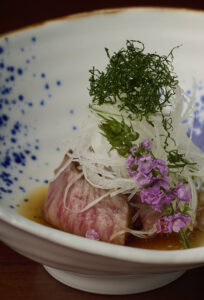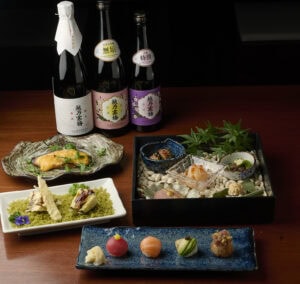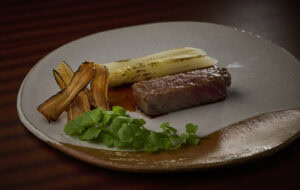On a rainy, cool spring day, sushi lovers gathered in our restaurant to experience aromatic high-quality sake in a sake tasting. It was a real experience for the palate!
In an interesting lecture, sake expert Jörg Müller first explained to the eager guests the unusual production of gourmet sake compared to what is commonly known about 08/15 sake in Germany. Most of the guests knew this ordinary rice wine mainly as a warm drink. So the first surprise was that premium sake is drunk cold! With premium rice wine, it is even better to drink it cool. Mr. Mueller noted about warm sake that heating it gradually robs it of its various characteristic notes. With ordinary table rice wine, this does not matter - and sometimes even intentional...
As a further surprise, the guests were informed that sake consists only of rice and water. Something incredible for all present, especially since it then went to the testing. Those who had closed their eyes while drinking could taste melon, fig, nut and much more depending on the wine. Jörg Müller remarked on the many "Mmhs" and "Ahhs" that in the production process the rooms smell of different fruits, although only rice and water are used.
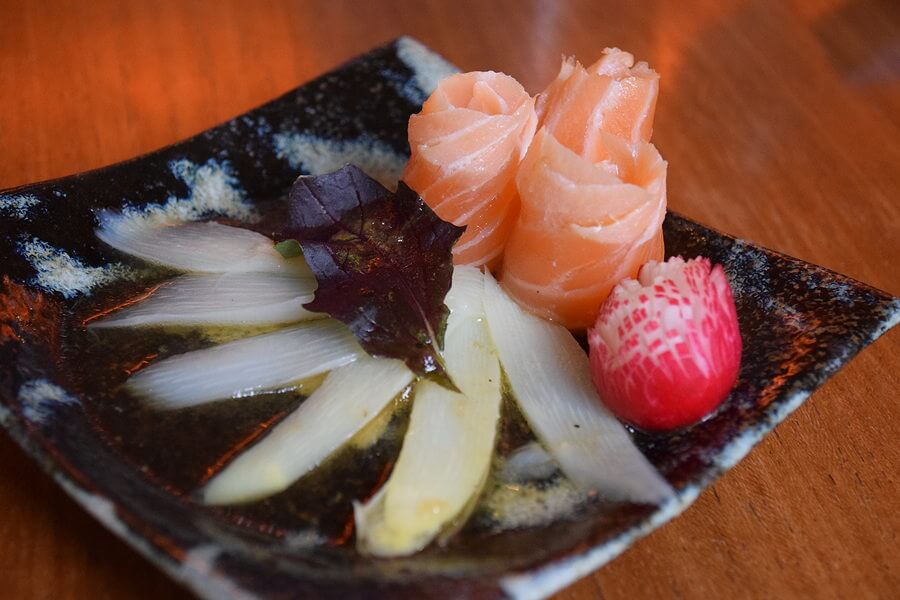
The individual flavors became even more intense when our Chef Saito served Carpaccio Sashimi of Salmon with White Asparagus and Olive-Yuzu-Lime Sauce with the first rice wine. Matched with the Shichiken Sparkling Dry, which is of the Junmai sake variety with rice grains polished to 70%, the salmon tasted especially good. The first of five other delicacies served together with premium sake from Japan.
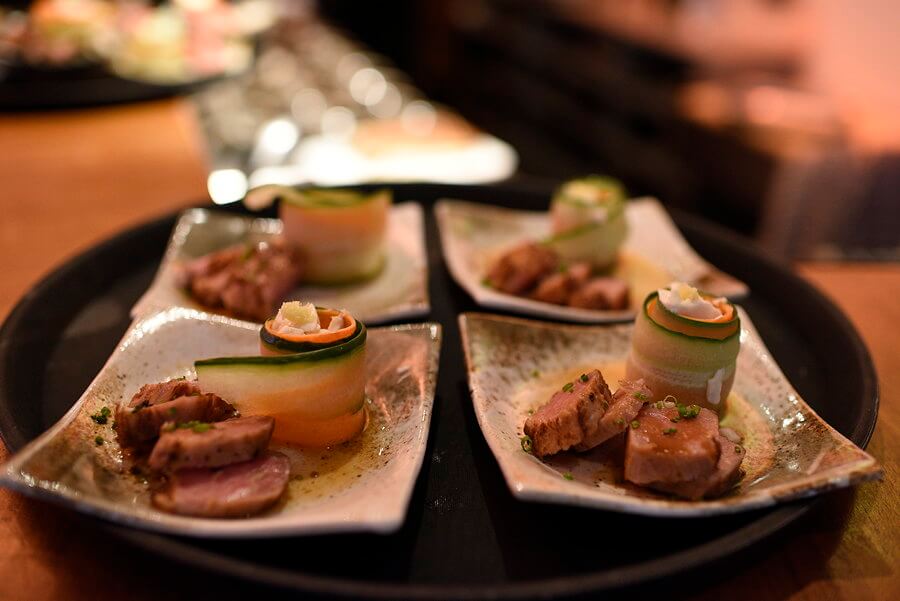
During each course, Jörg Müller explained to the guests how each specific sake is produced and what special features must be observed. For the Japanese, sake is a traditional drink that receives a great deal of attention during production. Not for nothing sake is also called "The drink of the gods" and has a religious background. The oldest brewery, for example, is 850 years old and sake is made there exclusively by hand. The Japanese use special types of rice for this, but the quality of the water is also enormously important. Sake is made with very soft water and it is recommended to use water containing minerals for the production. Differences in soil conditions for the mineral content in the water and thus ultimately responsible for the taste of sake. This difference was particularly evident when tasting the "Kobe Classic" from Fukuju and the "Lei" from Katsuyama, both Junmai Ginjo quality sake. If the sake from Fukujo tasted fruity dry due to the water quality containing more minerals, the sake from Katsuyama was rather sweet and fruity.
Since sake production is more like beer production, we speak of sake breweries rather than wine presses. In the breweries, the rice is first polished, washed and soaked in elaborate steps. The point is to get to the inside of the kernel. This is needed for brewing sake and the degree of abrasion represents the quality of the wine. If only a little has been rubbed off and there is still 90% of the rice kernel left, it is called table sake. From about 70%, we enter the premium range. The premium range starts with Junmai-shu and Honjozo-shu sake. Junmai Ginjo-shu and Ginjo-shu follow, with only about 60% of the rice grain remaining. The absolute premium class is called Junmai Daiginjo-shu and Daiginjo-shu, in some of which the rice grains are reduced to 50% or less of the original volume.
The production of an aromatic rice wine is a long process that involves several steps, always done by hand.
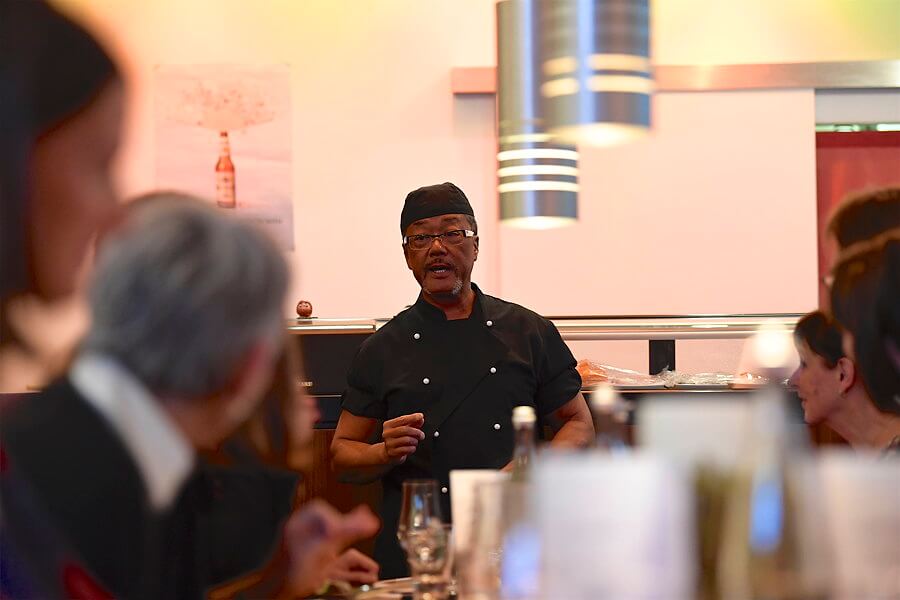
For all of the six premium sake tasted, the chef Saito-san presented, explained and served matching dishes. Finally, the kitchen had also spent several hours in preparation to accompany the sake tasting with very special, specially designed small specialties. In addition to the carpaccio sashimi, there was grilled black cod in Saskia miso sauce from Kyoto, akaebi-isobe tempura (a shrimp deep-fried in tempura batter) together with bamboo wakame, a duet of toro tataki and organic tofu, a sushi variation with eel and mackerel, and finally, to match a special yuzu sake, a red bean mizuyoukan. All dishes were dressed with rice wine in different ways and were a culinary feast when paired with the premium sake.
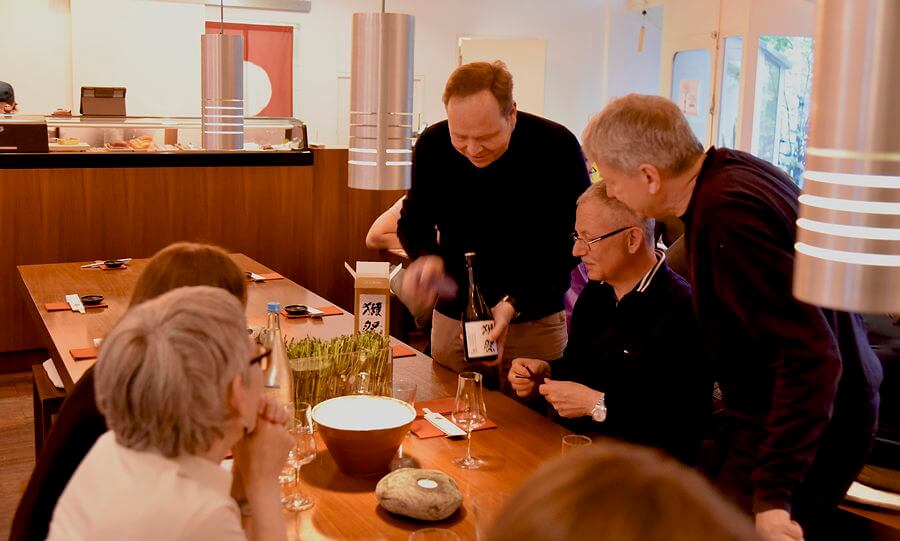
The composition of the guests was also wonderfully pleasant: young couples, older gentlemen in a circle of friends - our guests also reflected the very different, mixed composition of our restaurant visitors on this special afternoon. Some of the groups used the moment after the sake tasting to reserve a seat for afterwards, to try some more sushi - and even the absolute premium sake, Dassai 23. Of course, the guests could not miss this opportunity to have the advantages of this expensive masterpiece of one of the world's most sought-after sake breweries explained directly by Mr. Müller. We were very pleased about the great feedback of our customers and could inspire Mr. Müller to organize another sake tasting in autumn - as soon as it is so far and a date is fixed, we will inform as always via our newsletter and of course here in the blog! You will find current dates in the future on our event page.
